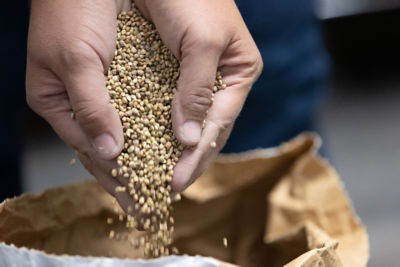Causal Agent
Imbalance of calcium in the fruit
Distribution
Worldwide
Symptoms
The first visible symptom of blossom-end rot is a watersoaked area near the blossom scar of the fruit. This area later develops into a tan to brown, leathery lesion. Saprophytic fungi often colonize these lesions, which gives them a gray to black, velvety appearance.
 Colonization of sunscald (left) and blossom-end rot (right) lesions by saprophytic fungi.
Colonization of sunscald (left) and blossom-end rot (right) lesions by saprophytic fungi.
Conditions for Development
Blossom-end rot is associated with insufficient calcium uptake and alternating periods of wet and dry soil. Though blossom-end rot often is associated with mature fruit, young, rapidly growing fruit are most prone to calcium deficiency. Sudden and extreme changes in water availability may induce fruit growth fluctuations that lead to blossom-end rot. Stress associated with root damage, mild drought, high soil salinity or excess nitrogen (excess ammonium) also may cause Blossomend rot.
Control
Drip irrigate to supply an even amount of water, and apply lime to soils low in calcium. Avoid using ammonium sources of fertilizer or excess magnesium. Fertilize with calcium nitrate in areas where blossom-end rot is known to occur.




